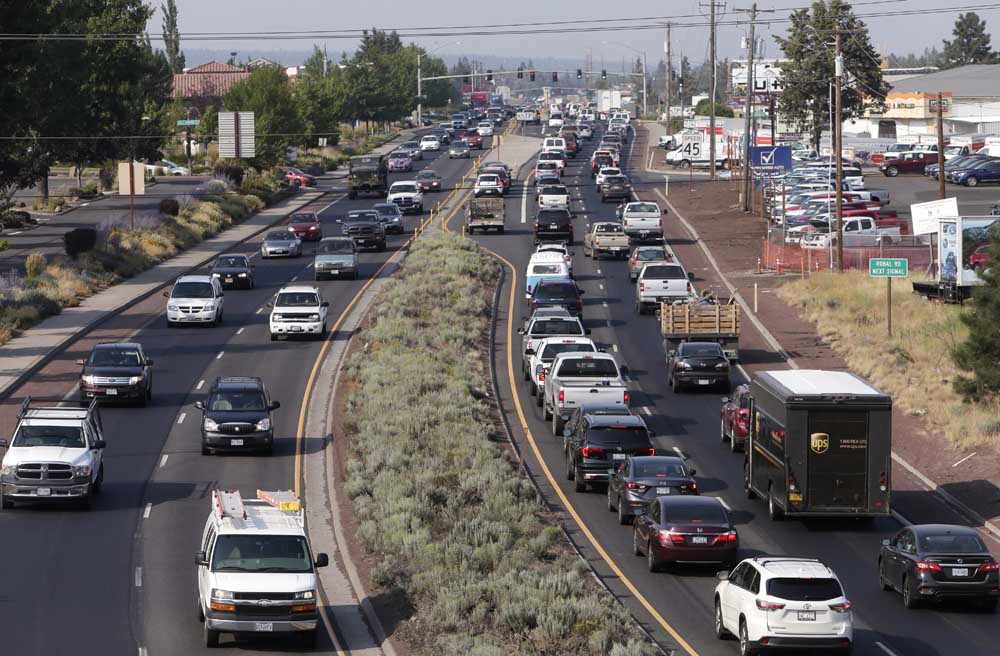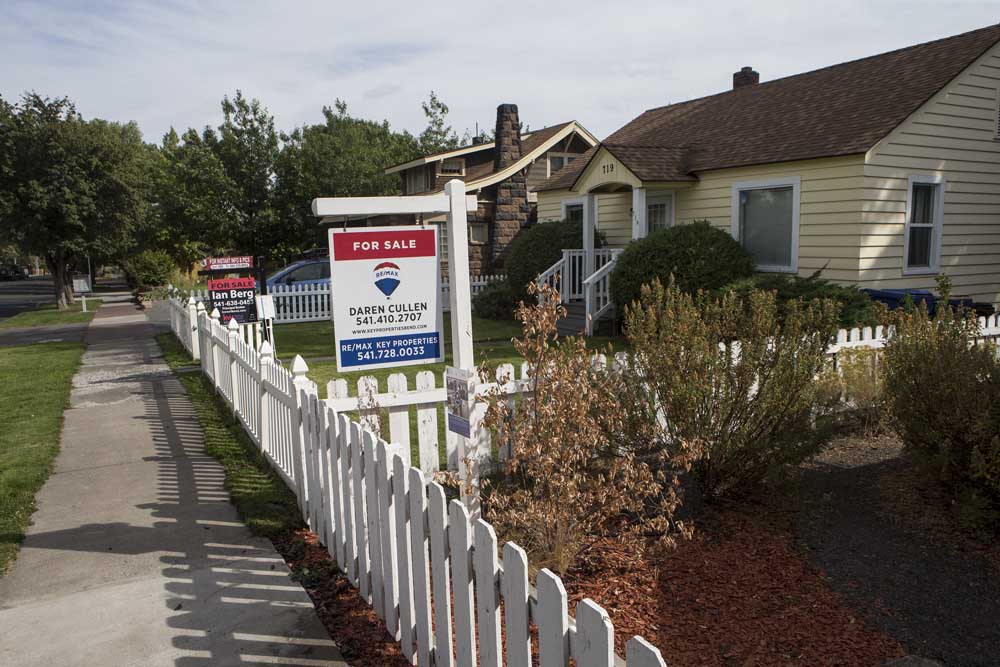Facebook could lay fiber broadband along Central Oregon highways
Published 12:00 am Tuesday, November 6, 2018

- Looking north toward Redmond, this photo shows traffic in the north and southbound lanes on U.S. Highway 97 on the north side of Bend in 2017.
Oregon transportation officials will try to negotiate an agreement with Facebook that would allow the company to use highway right of way for a 100-mile fiber broadband line serving its Prineville data center.
In exchange for the unprecedented step of allowing a private enterprise to use the right of way, the Oregon Department of Transportation could gain access to broadband that would benefit Central Oregon in the future. State and local officials envision using the internet connectivity to transmit more real-time information to drivers or to enable use of autonomous vehicles.
Trending
“There’s a lot that’s happening in the ITS — intelligent transportation systems — arena,” said Tammy Baney, the Deschutes County commissioner who is chairwoman of the Oregon Transportation Commission, which oversees ODOT. “It’s an opportunity for us to look at ways that on that stretch, we may not have been able to put in those new technologies, where we would have an opportunity now.”
Facebook’s fiber-optic line would follow state Highway 126 from Prineville to Redmond and U.S. Highway 97 south to Chemult, according to ODOT. The fiber line would link the data center to a major east-west trunk line that cuts through the region, said Art James, senior project executive in the ODOT Office of Innovation. James briefed the transportation commission at an Oct. 19 meeting where Baney and Commissioner Julie Brown gave the go-ahead to negotiate with Facebook. The other commissioner present, Robert Van Brocklin, recused himself from the vote because his law firm represents Facebook on other matters.
The deal with Facebook wouldn’t preclude ODOT from making similar arrangements with other entities, Baney said. “We wouldn’t want to be saying, ‘Welcome to Oregon, Facebook. Our right of way is yours,’” she said.
Facebook has built its own broadband capacity in other states. In 2017, Facebook announced it would build 200 miles of fiber from its Los Lunas, New Mexico, data center and claimed it would be one of the highest-capacity systems in the United States.
The company’s decision to build its own fiber means it won’t have to lease capacity from long-haul providers such as Level 3, CenturyLink or XO Communications, the online industry publication Data Center Knowledge reported at the time.
Direct access to the ODOT right of way is what would allow Facebook to build and own the fiber route from Prineville without partnering with a telecommunications carrier, Kevin Salvadori, Facebook’s director of network investments wrote in a letter to the transportation commission.
Trending
Facebook provided ODOT with a “template” that’s been used in other jurisdictions, James told the commission. The Oregon Department of Justice has advised transportation officials that they can’t sell the right of way, so the deal with Facebook has to be an exchange, he said.
Facebook’s fiber-optic line wouldn’t prevent ODOT from adding lanes or working on the highway system, ODOT spokeswoman Sarah Kelber said.
“I don’t see anything bad about it. I think it just opens opportunities,” said Tyler Deke, manager of the Bend Metropolitan Planning Organization, the lead agency for regional transportation planning.
Although ODOT hasn’t stated uses for Facebook-built broadband that are specific to Central Oregon, Deke can think of several. One would be to make signals on Third Street sensitive to traffic patterns, similar to those on Highway 97 at Robal Road, he said.
Another would be to create variable speed limits on the highway, based on congestion levels or weather conditions. ODOT has discussed installing enough weather sensors between Bend and La Pine, which is at a higher elevation, to create a system that would lower the speed limit when there’s snow or ice present, he said.
“If there’s fiber along the corridor, implementing that type of system becomes easier and cheaper,” Deke said.
Any agreement ODOT makes with Facebook has to be approved by the transportation commission. ODOT officials hope to return to the commission with a document in the spring, Kelber said. Then Facebook could begin designing its project, subject to ODOT approval. Construction probably wouldn’t begin until 2020, she said.
— Reporter: 541-617-7860, kmclaughlin@bendbulletin.com
This story has been corrected. An earlier version incorrectly stated that Facebook avoids leasing broadband capacity from telecommunications firms.








